|

navbar
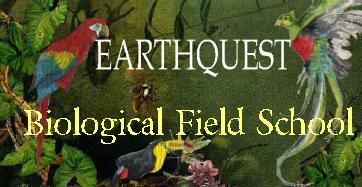
Rare Plants of Ontario
Family: Rutaceae/Rue
COSEWIC: Special concern
MNRF: Special concern
Provincial rank: S3
EARTHQUEST Regional rank: R2 (Ecoregion 7E)
Local rank (watersheds):
Essex Region watershed (L2)
Lower Thames River watershed (L1)
Catfish Creek watershed (L1)
Long Point watershed (L1)
Niagara Region watershed (L2)
Grand River watershed (L1)
Common Hop-tree(Ptelea trifoliata)
Spring |
Seedling
| 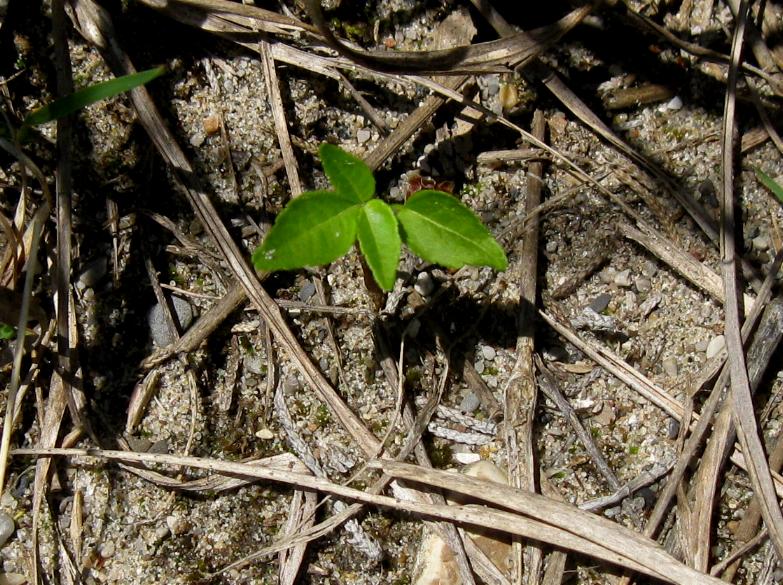 Photo: Dave Jolly Photo: Dave Jolly |
Summer |
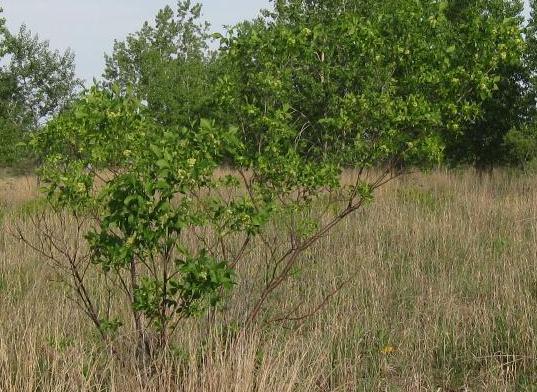 Photo: Dave Jolly Photo: Dave Jolly |
Leaf
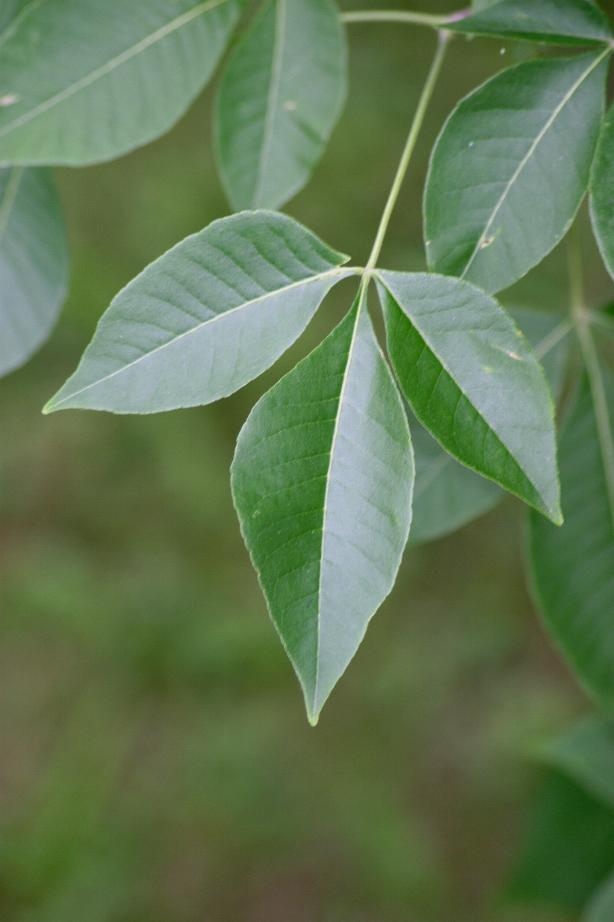
Photo: Dave Jolly
| Samaras
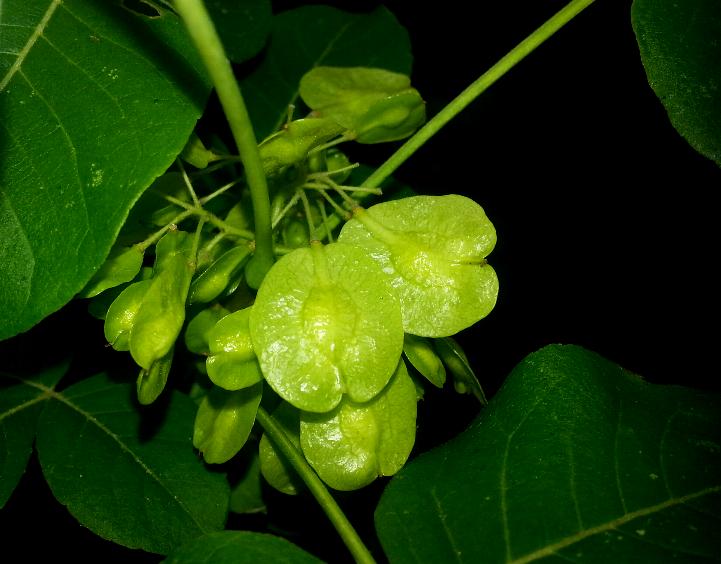
Photo: Dave Jolly
| Male Flower
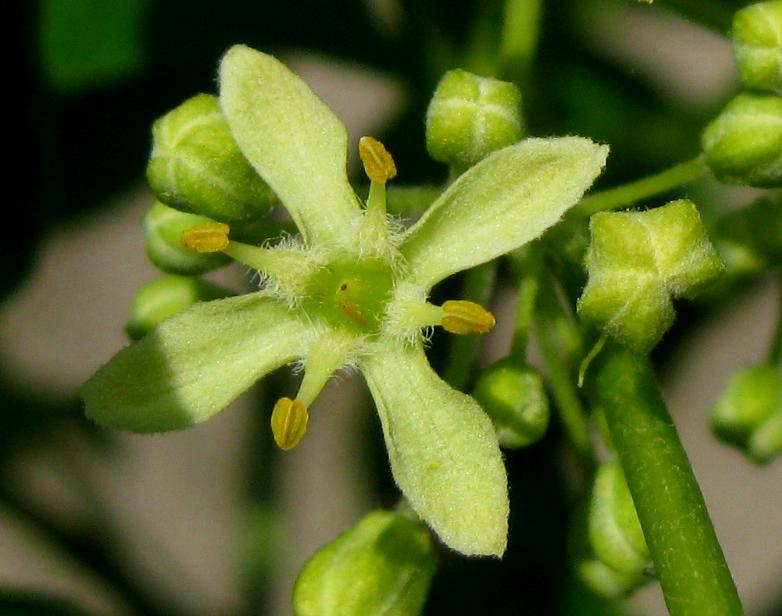
Photo: Dave Jolly
| Female Flower
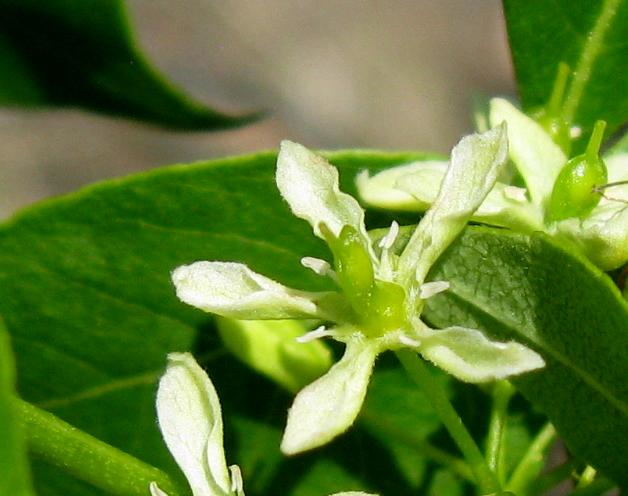
Photo: Dave Jolly |
Fall |
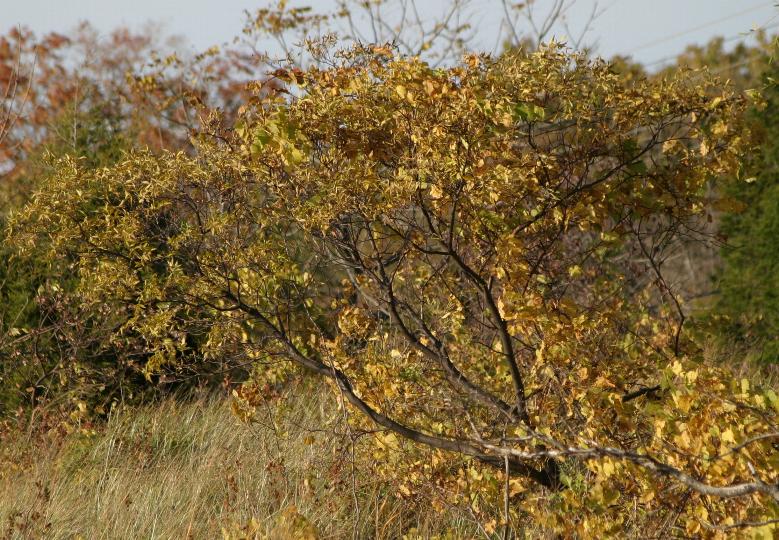 Photo: Dave Jolly Photo: Dave Jolly |
Growth
Winter |
| 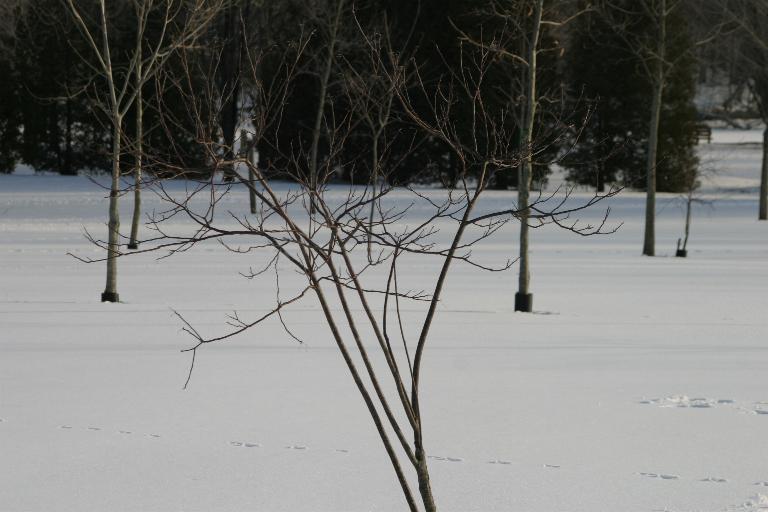 Photo: Dave Jolly Photo: Dave Jolly |
Bark
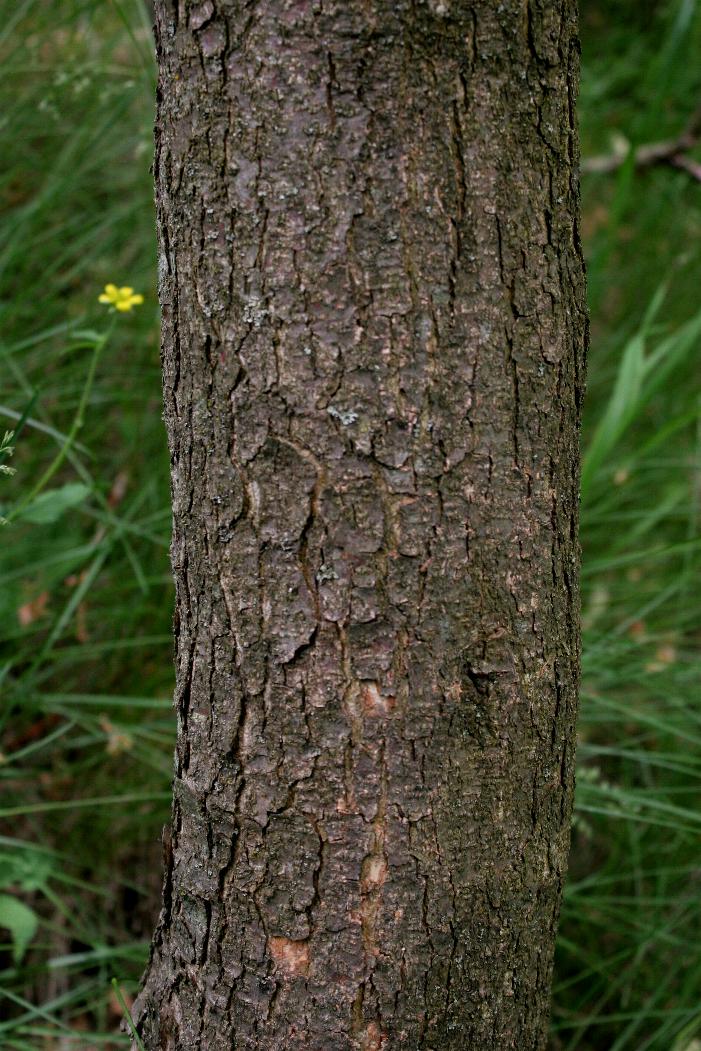
Photo: Dave Jolly
| Leaf scar
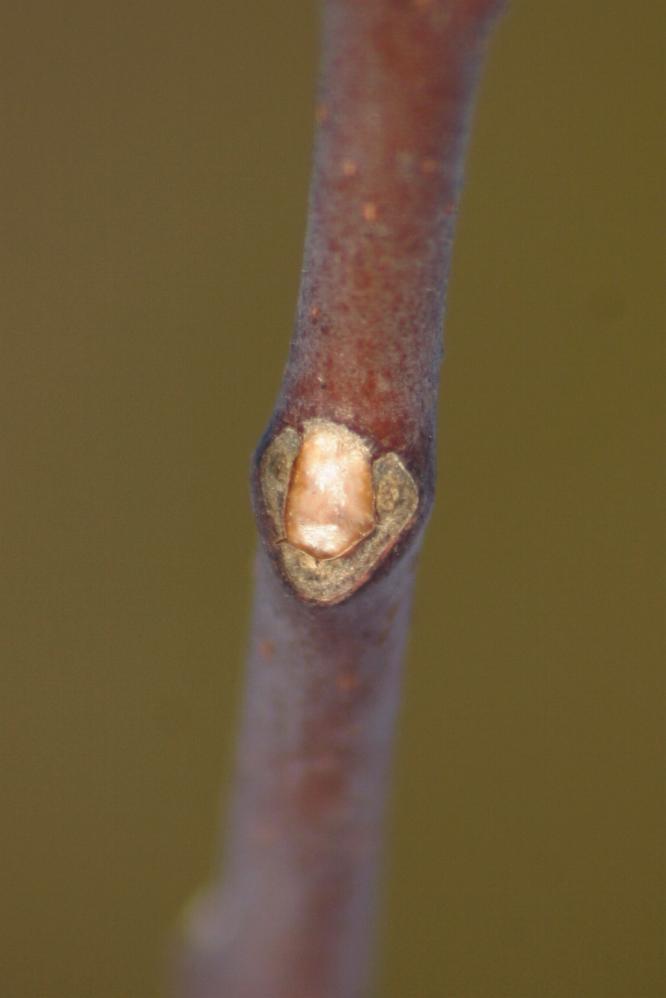
Photo: Dave Jolly |
Flowering period: From June 7 - July 3. The source of this data is the EARTHQUEST Plants of Ontario database (2015b) and Dobbie (pers. comm. 2017).
5 Second Rule Identification: Compound, alternate leaves which are sessile, resembling Staphylea spp. superficially. One of two members of the Rue/Rutaceae family in Ontario. Leaves may have a pepper smell or odor when crushed or bruised.
Biology and Ecology: For a detailed account of this species please review the report available at: COSEWIC Common Hop-tree status report and the MNRF recovery strategy
Insect Pollinators: Twenty three species of insects pollinators have been documented by Jolly and Plaskett (pers. obs. 2017) during field research on the Port Burwell Provincial Park populations; Syphrid flies (Syphridae spp.), Staple flies (Calliphoridae spp.), Spider wasps (Pompilidae spp.), Picture winged flies (Ulidiidae spp.), ants (Formicidae spp.), Robber flies (Asilidae spp.), Eastern Pine Elfin (Callophrys niphon), and Eastern tailed-blue (Cupido comyntas) have been observed pollinating flowers (Jolly and Plaskett pers obs. 2017). There was a higher biodiversity of insect pollinators visiting male flowers in open habitat types (i.e., SBOD1-1 vegetation type) within the Port Burwell Provincial Park population during 2017 field research (Jolly and Plaskett pers. obs. 2017). Flowers may also be self-fertized.
Population Size: One thousand three hundred and fifty one records in the NHIC database, representing 30 extant NHIC Element Occurrences (EO). At least 5 EO records are historical. Jolly and Bruce Bolin (cited in Jolly in preparation) surveyed for 40 minutes on June 18, 2016. Jolly continued to survey for 2.75 hours on October 11, 2016. Jolly and Ron Allensen (Jolly in preparation) spent 3 hours surveying the Port Burwell population on October 22, 2016. A total of 233 stems were counted. Of these, 225 were mature plants and 4 were saplings, and 4 were seedlings. Jolly estimated that approximately 400 stems comprised the Port Burwell Provincial Park population. Jolly (in preparation) considers shrubs that at least 2 years old and more than 30 cm in height as saplings, while those less than 30 cm were considered seedlings. A total of 0.28 ha was determined to be the area of the population by recording the outer limit of plants (Jolly 2017). The largest, and possibly oldest individual, was a female shrub measuring 6 m in heigth with a dbh of 11.8 cm.
Habitat & Soils: Found primarily on sandy, well-drained, often dry, naturally-disturbed shorelines, in adjacent open areas, and on alvars (MNRF 2013). Insect pollinators utilize coniferous woodland and beach sand dune habitats (Jolly 2020). Ecological Land Classification data is available for the following vegetation types in Essex region (extracted from MNRF 2013); Chinquapin Oak – Nodding Onion Treed Alvar Vegetation Type, Red Cedar Alvar Woodland (Red Cedar Treed Alvar), and Dry Annual Open Alvar Pavement Vegetation Types, as well as the Shrub Alvar and Mineral Cultural Thicket Ecosites, Mineral Cultural Thicket Ecosite, Sea Rocket Sand Open Shoreline (SHOM1-2), Beach Grass – Wormwood Open Graminoid Sand Dune (SBOD1-3), Little Bluestem – Switchgrass– Beachgrass Open Graminoid Sand Dune (SBOD1-1), Hoptree Shrub Sand Dune (SBSD1-2), Red Cedar Treed Sand Dune (SBTD1-3), Dry – Fresh Drummond’s Dogwood
Deciduous Shrub Thicket, and Fresh – Moist Cottonwood Deciduous Forest (FODM8-3), Vegetation Types adjacent to the shores of Lake Erie. In Chatham-Kent; Little Bluestem – Switchgrass – Beachgrass Open Graminoid Sand Dune (SBOD1-1), Dry Big Bluestem Graminoid Tallgrass Prairie (MEGM1-2), Cottonwood Treed Sand Dune (SBTD1-1), and Willow Shrub Sand Dune (SBSD1-3) Vegetation Types. During vegetation surveys Jolly (2017) classified five communities at Port Burwell Provincial Park; White Ash Deciduous Woodland Type (WODM4-2), Little Bluestem - Switchgrass - Beachgrass Open Graminoid Sand Dune (SBOD1-1), Dry - fresh Scots Pine Coniferous Woodland Type (WOCM1-4), Dry - Mixed Tallgrass Prairie Type (MEGM1-4), and Dry Scots Pine Calcareous Bedrock Coniferous Forest Type (FOCS1-3). At Pinehurst Lake Conservation Area in Brant county Jolly (2023) found planted specimens in Fresh-moist Mixed meadow ecosite (MEMM4)
Threats: Threats land development, particularly due to cottage development along the Lake Erie shoreline. Nesting Double-crested Cormorants (Phalacrocorax auritus) comprise the second largest threat to recovery of the species (MNRF 2013). Altered coastal processes from extensive shoreline protection, stabilizing and alteration, habitat succession, insect herbivory, invasive species such as White Poplar (Populus alba), Scots Pine (Pinus sylvestris), Common Reed (Phragmites australis) and Black Locust (Robinia pseudoacacia)as well as recreational activities make up the bulk of other threats facing Canadian populations. Invasive species were also confirmed by Jolly and Plaskett (pers. obs. 2017). During the 2016 population survey Jolly (in preparation) also noted that a number of plants were girdled or browsed by White-tail Deer (Odocoileus virginianus). Some individuals were damaged by ice storms.
Recovery: A national COSEWIC recovery recovery strategy was merged with an MNRF provincial document in 2013.
Biometrics:Plants may produce flowers in 2nd year from seedling stage when shrub is approximately 30 cm in height (Jolly pers obs 2016). Leaves are compound, with sessile 3 - 5 leaflets. Flowers may contain 3 to 5 soft yellow or lemon colored petals. Male and female flowers often appear on separate shrubs (i.e., dioecious), but some populations may have male and female flowers on the same shrub (i.e., monoecious) (Ambrose, Kevan and Gadawski 1985). Females flowers possess a pistil with 4 to 5 reduced stamen. The pistil swells into the samaras after fertilization. Male flowers have 3 to 5 longer stamen than female flowers, which aids in their identification.
Environmental Protection:Initially ranked federally as special concern by COSEWIC in 1984. This designation was elevated to threatened in 2002. On January 12, 2005 the species was federally listed as a Schedule 1 threatened species under the Species at Risk Act (SARA). The province lists Common Hop-tree as threatened.
Confusing look-a-likes: Bladdernut (Staphylea trifolia), which has an oppositely paired leaf arrangement and compound leaves with the central leaflet stalked. Saplings may be mistaken with the ground cover form of Poison Ivy (Rhus radicans), which also has a stalked central leaflet.
Plant Associates: Typically found growing with these ground layer species; New England Aster (Symphyotrichum nova-angliae), Wild Bergamot (Monarda fistulosa), Common Scouring-rush (Equisetum hymale), Canada Goldenrod (Solidago canadensis), Wild Carrot (Daucus carota), and Highbush Cranberry (Viburnum trilobum).
References:
1. Jolly, D.W. 2023. Ecological Land Classification Pinehurst Lake Conservation Area, Brant County, Ontario. Unpublished report. 147 p.
2. Jolly, D.W. 2020. Factors that may Influence Recruitment to help improve Natural Regeneration of threatened Common Hoptree (Ptelea trifoliata) Point Pelee National Park, Essex region and Port Burwell Provincial Park, Elgin county, Ontario. Unpublished report. 19 p.
3. Jolly, D.W. 2017. Vegetation Surveys and Ecological Land Classification of Port Burwell Provincial Park. Unpublished report. 61 pp.
4. Jolly, D.W. 2015a. Species at Risk trees, shrubs and wildflowers of Ontario - volume 1 (revised). EARTHQUEST (Canada) for the Environment. Port Burwell. 193 pp.
5. Jolly, D.W. 2015b. Unpublished Common Hop-tree data extracted from the Plants of Ontario database. Website: www.earthquestcanada.ca [accessed January 7, 2015].
6. Ontario Ministry of Natural Resources. 2013. Recovery Strategy for the Common Hoptree (Ptelea trifoliata) in Ontario. Ontario Recovery Strategy Series. Ontario Ministry of Natural Resources, Peterborough, Ontario. iii + 5 pp + Appendix vi + 61 pp. Adoption of Recovery Strategy for the Common Hoptree (Ptelea trifoliata) in Canada (Parks
Canada Agency 2012).
7. Ambrose J, . D., P. G. Kevan and R. M. Gadawski. 1985. Hop tree (Ptelea trifoiata) in Canada: population and reproductive biology of a rare species. Can. Journal of Botany. 63: 1928- 1935.
Distribution: To date, current and historical populations have been found in 5 counties, or tier regional municipalities; Brant, Essex, Lambton, Norfolk, and Niagara region. EARTHQUEST distribution map does not show Walpole Island First Nation population. Please refer to MNRF (2013) recovery strategy.
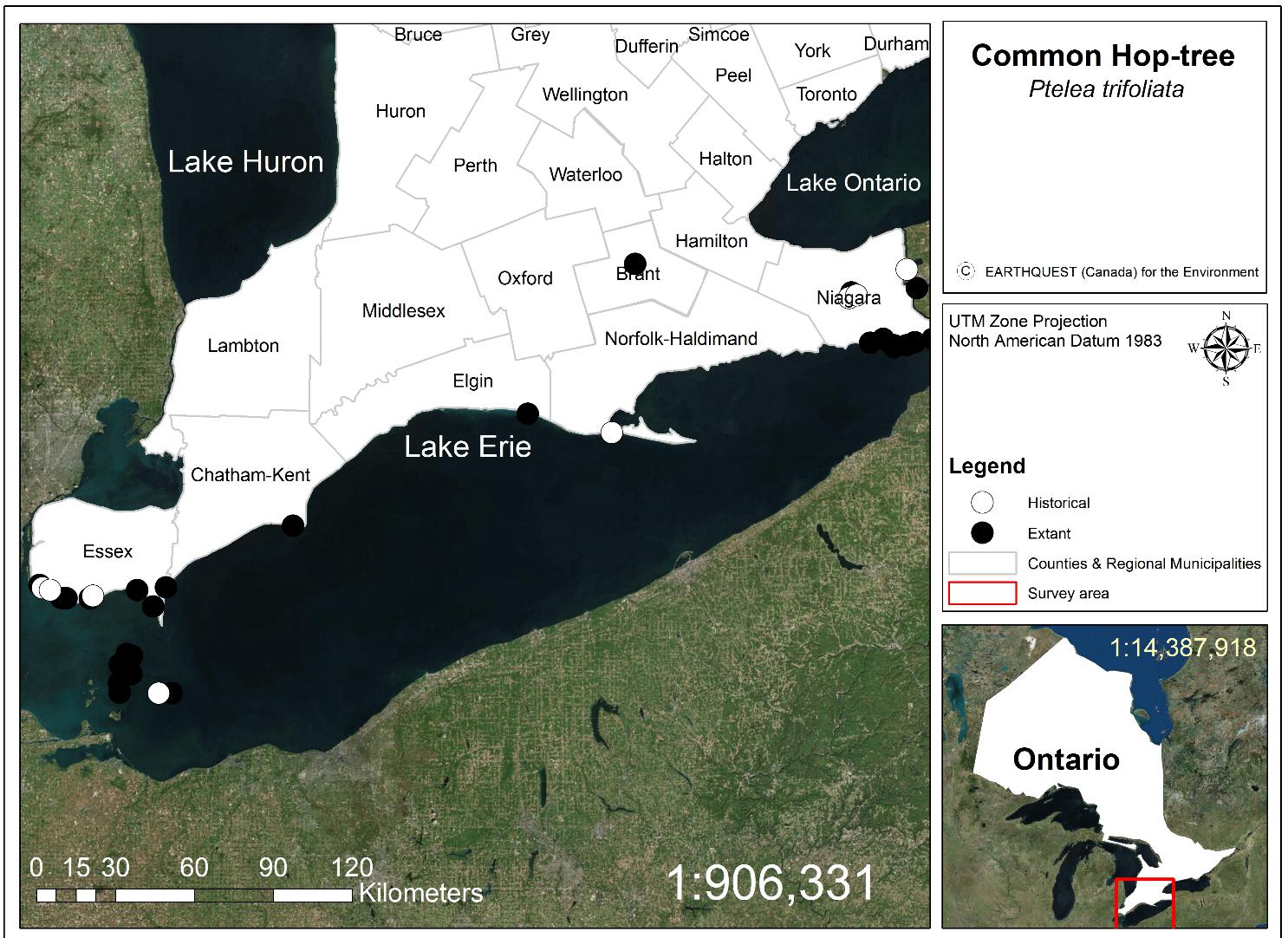
FBT terrestrial plant courses
Purchase your copy of my updated (2015) book on SAR trees, shrubs and wildflowers of Ontario
$150 CAD + shipping and handling
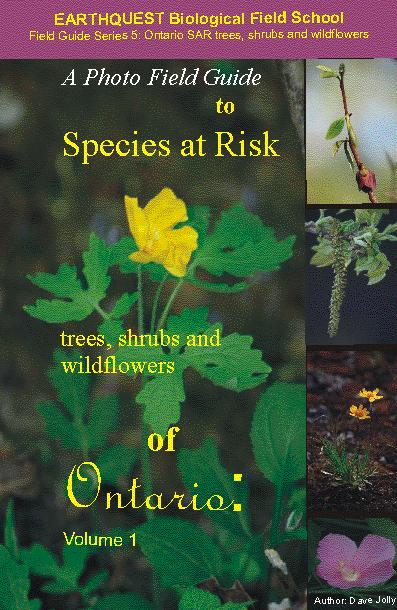
Photo: Dave Jolly
for more information please click on;
Ontario SAR & Rare Plants book


 E-mail: earthquestcanada@yahoo.com E-mail: earthquestcanada@yahoo.com
To order books, data and contribute information please contact:
Senior Instructor/Ecologist/Consultant & President
D. Jolly, B.Sc.
EARTHQUEST (Canada) for the Environment
Tel: 226-926-1470
©copyright EARTHQUEST (Canada) for the Environment
| Website designed and maintained by D. Jolly
Last Updated 24/06/17 | |
|












 EARTHQUEST (Canada) for the Environment
EARTHQUEST (Canada) for the Environment


